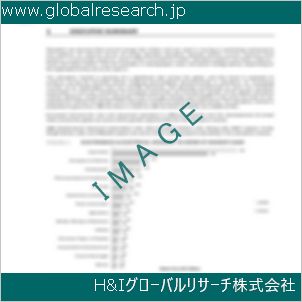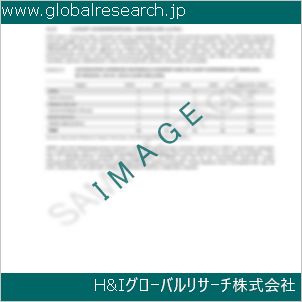Table of Contents
1 Industry Overview of Potassiumperoxide
1.1 Definition and Specifications of Potassiumperoxide
1.1.1 Definition of Potassiumperoxide
1.1.2 Specifications of Potassiumperoxide
1.2 Classification of Potassiumperoxide
1.3 Applications of Potassiumperoxide
1.3.1 Nuclear Application
1.3.2 Non-Nuclear Application
1.4 Industry Chain Structure of Potassiumperoxide
1.5 Industry Overview and Major Regions Status of Potassiumperoxide
1.5.1 Industry Overview of Potassiumperoxide
1.5.2 Global Major Regions Status of Potassiumperoxide
1.6 Industry Policy Analysis of Potassiumperoxide
1.7 Industry News Analysis of Potassiumperoxide
2 Manufacturing Cost Structure Analysis of Potassiumperoxide
2.1 Raw Material Suppliers and Price Analysis of Potassiumperoxide
2.2 Equipment Suppliers and Price Analysis of Potassiumperoxide
2.3 Labor Cost Analysis of Potassiumperoxide
2.4 Other Costs Analysis of Potassiumperoxide
2.5 Manufacturing Cost Structure Analysis of Potassiumperoxide
2.6 Manufacturing Process Analysis of Potassiumperoxide
3 Technical Data and Manufacturing Plants Analysis of Potassiumperoxide
3.1 Capacity and Commercial Production Date of Global Potassiumperoxide Major Manufacturers in 2023
3.2 Manufacturing Plants Distribution of Global Potassiumperoxide Major Manufacturers in 2023
3.3 R&D Status and Technology Source of Global Potassiumperoxide Major Manufacturers in 2023
3.4 Raw Materials Sources Analysis of Global Potassiumperoxide Major Manufacturers in 2023
4 Capacity, Production and Revenue Analysis of Potassiumperoxide by Regions, Types and Manufacturers
4.1 Global Capacity, Production and Revenue of Potassiumperoxide by Regions 2019-2024
4.2 Global and Major Regions Capacity, Production, Revenue and Growth Rate of Potassiumperoxide 2019-2024
4.3 Global Capacity, Production and Revenue of Potassiumperoxide by Types 2019-2024
4.4 Global Capacity, Production and Revenue of Potassiumperoxide by Manufacturers 2019-2024
5 Price, Cost, Gross and Gross Margin Analysis of Potassiumperoxide by Regions, Types and Manufacturers
5.1 Price, Cost, Gross and Gross Margin Analysis of Potassiumperoxide by Regions 2019-2024
5.2 Price, Cost, Gross and Gross Margin Analysis of Potassiumperoxide by Types 2019-2024
5.3 Price, Cost, Gross and Gross Margin Analysis of Potassiumperoxide by Manufacturers 2019-2024
6 Consumption Volume, Consumption Value and Sale Price Analysis of Potassiumperoxide by Regions, Types and Applications
6.1 Global Consumption Volume and Consumption Value of Potassiumperoxide by Regions 2019-2024
6.2 Global and Major Regions Consumption Volume, Consumption Value and Growth Rate of Potassiumperoxide 2019-2024
6.3 Global Consumption Volume and Consumption Value of Potassiumperoxide by Types 2019-2024
6.4 Global Consumption Volume and Consumption Value of Potassiumperoxide by Applications 2019-2024
6.5 Sale Price of Potassiumperoxide by Regions 2019-2024
6.6 Sale Price of Potassiumperoxide by Types 2019-2024
6.7 Sale Price of Potassiumperoxide by Applications 2019-2024
6.8 Market Share Analysis of Potassiumperoxide by Different Sale Price Levels
7 Supply, Import, Export and Consumption Analysis of Potassiumperoxide
7.1 Supply, Consumption and Gap of Potassiumperoxide 2019-2024
7.2 Global Capacity, Production, Price, Cost, Revenue, Supply, Import, Export and Consumption of Potassiumperoxide 2019-2024
7.3 USA Capacity, Production, Price, Cost, Revenue, Supply, Import, Export and Consumption of Potassiumperoxide 2019-2024
7.4 EU Capacity, Production, Price, Cost, Revenue, Supply, Import, Export and Consumption of Potassiumperoxide 2019-2024
7.5 China Capacity, Production, Price, Cost, Revenue, Supply, Import, Export and Consumption of Potassiumperoxide 2019-2024
7.6 Japan Capacity, Production, Price, Cost, Revenue, Supply, Import, Export and Consumption of Potassiumperoxide 2019-2024
8 Major Manufacturers Analysis of Potassiumperoxide
8.1 Manufacturer One
8.1.1 Company Profile
8.1.2 Product Picture and Specifications
8.1.2.1 Type I
8.1.2.2 Type II
8.1.2.3 Type III
8.1.3 Capacity, Production, Price, Cost, Gross and Revenue
8.1.4 Contact Information
8.2 Manufacturer Two
8.2.1 Company Profile
8.2.2 Product Picture and Specifications
8.2.2.1 Type I
8.2.2.2 Type II
8.2.2.3 Type III
8.2.3 Capacity, Production, Price, Cost, Gross and Revenue
8.2.4 Contact Information
8.3 Manufacturer Three
8.3.1 Company Profile
8.3.2 Product Picture and Specifications
8.3.2.1 Type I
8.3.2.2 Type II
8.3.2.3 Type III
8.3.3 Capacity, Production, Price, Cost, Gross and Revenue
8.3.4 Contact Information
8.4 Manufacturer Four
8.4.1 Company Profile
8.4.2 Product Picture and Specifications
8.4.2.1 Type I
8.4.2.2 Type II
8.4.2.3 Type III
8.4.3 Capacity, Production, Price, Cost, Gross and Revenue
8.4.4 Contact Information
8.5 Manufacturer Five
8.5.1 Company Profile
8.5.2 Product Picture and Specifications
8.5.2.1 Type I
8.5.2.2 Type II
8.5.2.3 Type III
8.5.3 Capacity, Production, Price, Cost, Gross and Revenue
8.5.4 Contact Information
…
9 Marketing Trader or Distributor Analysis of Potassiumperoxide
9.1 Marketing Channels Status of Potassiumperoxide
9.2 Traders or Distributors with Contact Information of Potassiumperoxide by Regions
9.3 Ex-work Price, Channel Price and End Buyer Price Analysis of Potassiumperoxide
9.4 Regional Import, Export and Trade Analysis of Potassiumperoxide
10 Industry Chain Analysis of Potassiumperoxide
10.1 Upstream Major Raw Materials Suppliers Analysis of Potassiumperoxide
10.1.1 Major Raw Materials Suppliers with Contact Information Analysis of Potassiumperoxide
10.1.2 Major Raw Materials Suppliers with Supply Volume Analysis of Potassiumperoxide by Regions
10.2 Upstream Major Equipment Suppliers Analysis of Potassiumperoxide
10.2.1 Major Equipment Suppliers with Contact Information Analysis of Potassiumperoxide
10.2.2 Major Equipment Suppliers with Product Pictures Analysis of Potassiumperoxide by Regions
10.3 Downstream Major Consumers Analysis of Potassiumperoxide
10.3.1 Major Consumers with Contact Information Analysis of Potassiumperoxide
10.3.2 Major Consumers with Consumption Volume Analysis of Potassiumperoxide by Regions
10.4 Supply Chain Relationship Analysis of Potassiumperoxide
11 Development Trend of Analysis of Potassiumperoxide
11.1 Capacity, Production and Revenue Forecast of Potassiumperoxide by Regions and Types
11.1.1 Global Capacity, Production and Revenue of Potassiumperoxide by Regions 2024-2029
11.1.2 Global and Major Regions Capacity, Production, Revenue and Growth Rate of Potassiumperoxide 2024-2029
11.1.3 Global Capacity, Production and Revenue of Potassiumperoxide by Types 2024-2029
11.2 Consumption Volume and Consumption Value Forecast of Potassiumperoxide by Regions, Types and Applications
11.2.1 Global Consumption Volume and Consumption Value of Potassiumperoxide by Regions 2024-2029
11.2.2 Global and Major Regions Consumption Volume, Consumption Value and Growth Rate of Potassiumperoxide 2024-2029
11.2.3 Global Consumption Volume and Consumption Value of Potassiumperoxide by Types 2024-2029
11.2.4 Global Consumption Volume and Consumption Value of Potassiumperoxide by Applications 2024-2029
11.3 Supply, Import, Export and Consumption Forecast of Potassiumperoxide
11.3.1 Supply, Consumption and Gap of Potassiumperoxide 2024-2029
11.3.2 Global Capacity, Production, Price, Cost, Revenue, Supply, Import, Export and Consumption of Potassiumperoxide 2024-2029
11.3.3 USA Capacity, Production, Price, Cost, Revenue, Supply, Import, Export and Consumption of Potassiumperoxide 2024-2029
11.3.4 EU Capacity, Production, Price, Cost, Revenue, Supply, Import, Export and Consumption of Potassiumperoxide 2024-2029
11.3.5 China Capacity, Production, Price, Cost, Revenue, Supply, Import, Export and Consumption of Potassiumperoxide 2024-2029
11.3.6 Japan Capacity, Production, Price, Cost, Revenue, Supply, Import, Export and Consumption of Potassiumperoxide 2024-2029
12 New Project Investment Feasibility Analysis of Potassiumperoxide
12.1 New Project SWOT Analysis of Potassiumperoxide
12.2 New Project Investment Feasibility Analysis of Potassiumperoxide
13 Conclusion of the Global Potassiumperoxide (CAS 17014-71-0) Industry 2024 Market Research Report
| ※参考情報 過酸化カリウム(Potassium peroxide)は、化学式 K2O2 を持つ化合物であり、主に過酸化水素の塩基性誘導体として知られています。CAS番号は 17014-71-0 で、工業や実験室でさまざまな用途に利用されています。その特性、用途、関連技術について詳しく解説いたします。 過酸化カリウムは無色から淡黄色の結晶であり、水に溶解する特性を持っていますが、湿気を含む環境では不安定な状態になることがあります。この化合物は強い酸化剤として知られており、過酸化物群に分類されます。このため、過酸化カリウムは様々な化学反応で酸化剤として使用されることが一般的です。 過酸化カリウムの主な特徴の一つは、その酸化能力の高さです。高い酸化能力により、燃焼促進剤としての用途が広がります。特に、航空宇宙、軍事、製薬などの分野では、その特性が評価されています。また、過酸化カリウムは反応性が高く、取り扱いには注意が必要です。例えば、水と反応すると酸素を放出し、過酸化水素を生成するため、過酸化カリウム扱う際は適切な管理が求められます。 この化合物はいくつかの用途に利用されています。まず、過酸化カリウムは酸化剤としての特性から化学合成の反応において使用されることが多いです。特に、有機合成や無機化学の領域では、特定の化合物の合成過程において重要な役割を果たしています。さらに、過酸化カリウムは水質浄化にも利用されています。排水処理や飲料水の消毒において、細菌や有機物を効果的に分解するための手段として活用されます。 また、農業分野においては、過酸化カリウムは土壌改良剤として用いられることがあります。この場合、土壌中の有害な物質を酸化して分解し、農作物の成長を促進する役割を果たします。さらに、過酸化カリウムは水耕栽培や水栽培においても利用されることがあります。水の中に溶解させることで、酸素供給を促進し、植物の成長を助けます。 関連技術としては、過酸化カリウムの製造方法が挙げられます。一般的には、酸化カリウムと過酸化水素を反応させることで合成されます。この方法では、温度や圧力の管理が重要であり、反応条件に応じて生成物の純度や収率が変わるため、精密な操作が求められます。さらに、合成に際しては触媒を用いることもあり、反応を効率的に進める技術も開発されています。 過酸化カリウムの取り扱いにおいては、安全性にも留意する必要があります。その酸化特性のため、引火性や爆発性の危険性が伴うことがあります。したがって、過酸化カリウムを扱う際には、適切な安全対策が不可欠です。防護具の着用や保管方法の工夫、必要なサステイナブルな廃棄処理も考慮することが重要です。 過酸化カリウムは、化学的性質や多様な用途から研究対象としても注目されています。さまざまな分野での応用が期待されているため、新たな技術研究や適用方法の開発が進められているのが現状です。これからも、過酸化カリウムの特性を活かした新しい利用法が見つかることが期待され、化学産業や関連分野の発展に寄与することでしょう。 このように、過酸化カリウムは化学的特性を持つ非常に重要な化合物であり、その用途や研究は今後も進展していくことでしょう。その一方で、安全性に関する理解を深め、適切に取り扱うことが求められます。過酸化カリウムの持つ可能性を最大限に引き出すためには、科学者のみならず、利用者全体がその特性を理解し、責任を持って利用することが大切です。 |
❖ 免責事項 ❖
http://www.globalresearch.jp/disclaimer












